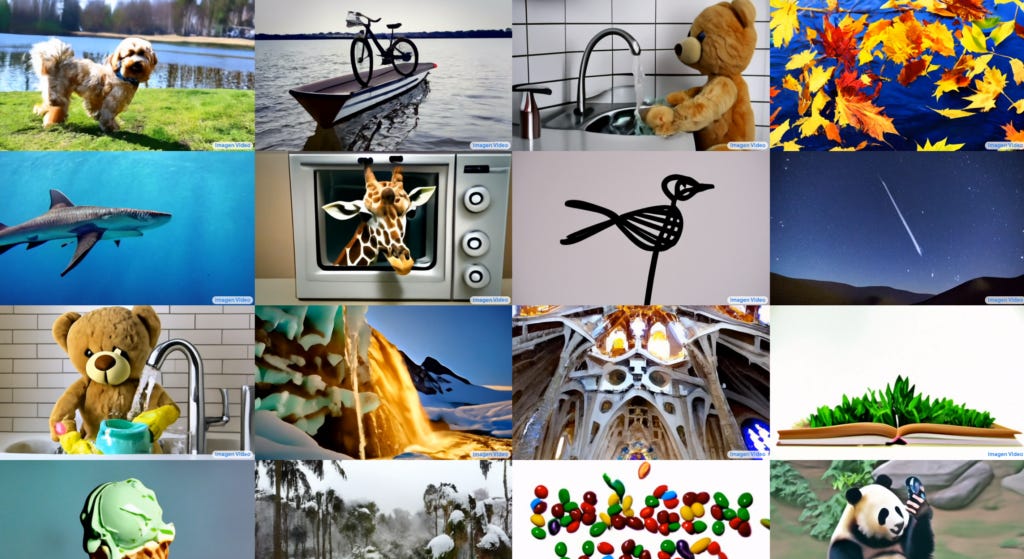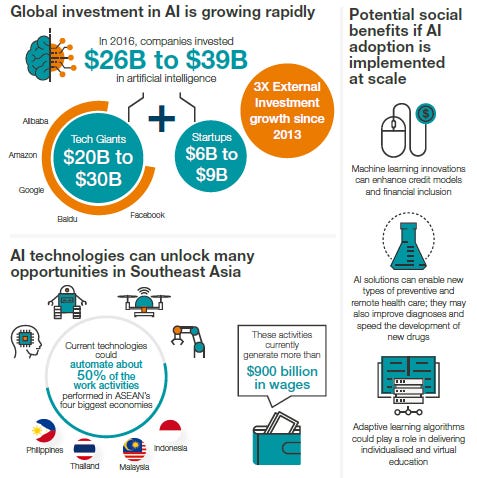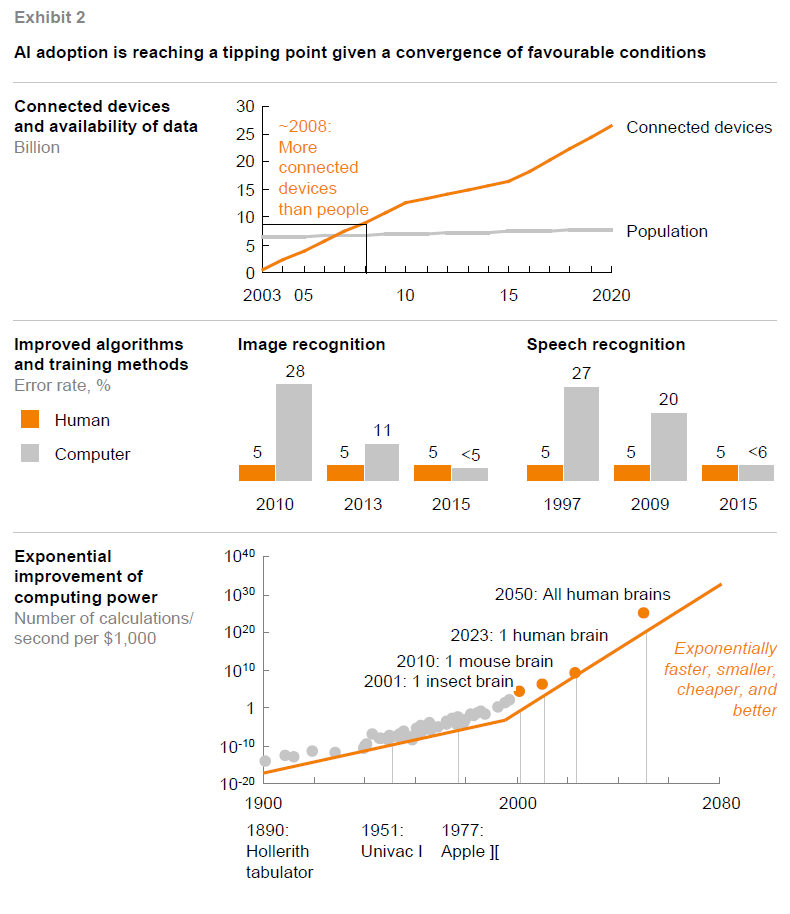ChatGPT, while cool, is just the beginning of AI;
Five key trends which will shape the future of AI

Hello hello! Welcome to the second episode of FuturiX. Thanks to 1,328 subscribers to my LinkedIn newsletter, UNLOCK and special gratitude for subscribers to FuturiX. We’re still small in number, but for something greater which is learning together about how technology convergence will shape the future of our world. So, spread the word in case you find this useful and want to help keeping it going.
Before we get into it, as I said in the previous episode, I intend to introduce individuals who are helping the community to grow and also other newsletters or podcasts related to A.I and futuristic technologies.
Today, I am honored to introduce AI in Business hosted by Daniel Faggella. Relatedto the topic of this episode, I invite you to listen to the below episode.
🤖A.I. is changing the world as we know it.
Global investment in AI is rapidly growing and apart from the potential risks and dangerous which has freaked some out, AI technologies can unlock many opportunities. For instance, look at this report from McKinsey Global Institute regarding southeast Asia’s future. But, what are the key trends that will shape the future of AI?

🧠 The expectations surrounding AI are soaring. Computing power has grown exponentially while its cost has fallen, making it more feasible to run sophisticated algorithms on massive data sets and less costly to train AI. Based on McKinsey Tech Trends Outlook 2022, the convergence of hardware and software could drive AI training costs by %70 at an annual rate through 2030. Perhaps most important of all, the spread of mobile devices is creating vast quantities of new data with new insights on facets of consumer lifestyle and usage of services. In fact, the world generates some 2.2 exabytes, or 2.2 billion gigabytes, of new data every day. These trends have converged to create major AI advances.

While the pace of change is uncertain, change is indeed happening—and it is beginning to penetrate every industry. So, what will driver this transformation?
Five key trends which will shape the future of AI
Gartner has outlined the 5 key trends which will have a significant role in shaping the future of artificial intelligence:
Democratized AI
Responsible AI
Generative AI
Composite AI
Edge AI
Democratized AI
This a new approach to artificial intelligence which aims to make the AI more accessible to a wider audience who can participate and significantly make contributions to advance this field, while also using AI to tackle some of the world’s most challenging problems. Based on what Microsoft states, this is the reason for continuing its multi-billion dollar partnership with OpenAI to accelerate the development of AI technology. The partnership as you already probably know, yielded impressive results such as the development of GPT-3.
In a tweet, Microsoft CEO Satay Nadella says the company will continue its mission “safely and responsibly”:


Generative AI
Large language and image AI models, sometimes called generative AI or foundation models, have created a new set of opportunities for businesses and professionals that perform content creation. Some include:
Automated content generation
Improved content quality
Increased content variety
Personalized content
In other words, Generative AI includes any type of artificial intelligence that uses unsupervised learning algorithms to produce content that is entirely created by machines. In short, it’s a technique that allows machines to use an input like text, audio and images to produce content that is plausible and, in some cases, even indistinguishable from the real deal.
MIT has described generative AI as one of the most promising advances in the field of artificial intelligence in the past decade, thus we will elaborate a little more on this topic.
Five industry use cases for generative AI
The recent hype and enthusiastic reactions of technology lovers, and all the news around ChatGPT and MidJourney are all thanks to the advancements of generative AI. Marketing and media are already feeling the impacts of generative AI. Gartner predicts:
By 2025, 30% of outbound marketing messages from large organizations will be synthetically generated, up from less than 2% in 2022.
By 2030, a major blockbuster film will be released with 90% of the film generated by AI (from text to video), from 0% of such in 2022.
Use cases for this AI model according to Gartner include:
No. 1: Generative AI in drug design
A 2010 study showed the average cost of drug discovery to market release was about $1.8 billion. Generative AI has already been used to design drugs for various uses within months which will help reduce both the costs and time to market of drugs.
No. 2: Generative AI in material science
Generative AI is impacting the automotive, aerospace, defense, medical, electronics and energy industries by composing entirely new materials targeting specific physical attributes and features. The result is to find, for example, materials that are more conductive or have greater magnetic attraction than those currently used in energy and transportation.
No. 3: Generative AI in chip design
Generative AI can use reinforcement learning (a machine learning technique) to optimize component placement in semiconductor chip design which reduces the product-development life cycle time from weeks with human experts to hours. Wow!
No. 4: Generative AI in synthetic data
Generative AI is one way of creating synthetic data, which is a class of data that is generated rather than obtained from direct observations of the real world or created by humans. In a recent article on my LinkedIn newsletter, I went through how Duolingo is using this type of Generative AI to generate real-time personalized questions in the process of assessing your language proficiency. You can access the article here.
No. 5: Generative design of parts
Generative AI enables industries, including manufacturing, automotive, aerospace and defense, to design parts that are optimized based on certain properties or can help remove constraints. For example, automakers can use generative design to innovate lighter designs for reducing fuel consumption.
Now that you’ve seen some of the potential use cases Generative, AI:
Don’t forget the risks of generative AI
It’s somehow obvious that Generative AI doesn’t just present opportunities; the threats are real, too — including the potential for deepfakes, copyright issues and other malicious uses of generative AI technology to target your organization apart from the recent freak out about how AI can replace us in workspace!
Therefore, based on Accenture companies and governments should consider defining a Responsible AI mission and principles, strengthen compliance with current laws and regulations, and develop tools and techniques to support principles e.g. fairness, explainability, robustness, traceability, and privacy. So, another trend for the future of AI is called Responsible AI.
Responsible AI
This trend describes the process of designing, developing and deploying AI responsibly to empower businesses, employees, customers and society as a whole by facilitating the propagation of trust and confidence in AI. Responsible AI therefore addresses topics such as AI ethics, data governance, trust and legality that should be well thought and implemented if we want to adhere to a future dominated by the presence of AI.
Edge AI
This trend looks at the fusion between edge computing and artificial intelligence that runs machine learning tasks directly on connected edge devices. The name edge AI means that the AI computation is done near the user at the edge of the network, close to where the data is located, rather than centrally at a cloud provider or private data center. In other words, Edge AI is the implementation of artificial intelligence in an edge computing environment.
According to Nvidia, the efficacy of deploying AI models at the edge arises from three recent innovations:
Maturation of neural networks: Neural networks and related AI infrastructure have developed to the point that enables generalized machine learning. OpenAI and the democratization of AI which we discussed in previous sections are enhancing the process of training AI models and deploying them in production at the edge.
Advances in compute infrastructure: Powerful distributed computational power is required to run AI at the edge. Recent advances in highly parallel GPUs have been adapted to execute neural networks.
Adoption of IoT devices: The widespread adoption of the Internet of Things has fueled the explosion of big data. With the ability to collect Big data — from sensors, smart devices and wearables, robots and more — we now have the data and devices necessary to deploy AI models at the edge. Moreover, 5G is providing IoT a boost with faster, more stable and secure connectivity.
Composite AI
Last but not least, according to Gartner, composite AI is the “combination of different AI techniques to achieve the best result”. AI is a very broad and flexible term that encompasses a lot of things like deep learning, neural networks, natural language processing, optimization techniques and graph techniques, etc. Following this logic, composite AI denotes the ability to use the right AI technique for the right use case to increase efficiency and maximize the technology’s versatility and adaptability.
👩🏻💻 Program me to become better!
Thanks for reading the second episode of FuturiX! So, what did you think of today's newsletter? Did you find it useful? Please feel free to connect, contact, reply, comment, and interact. Let me know what you'd like to see more of. This way, you will officially be programming me and typing commands in my terminal to help me improve and create more useful content.
Please comment/like/share.
Until next episode!
Sincerely Yours,
Mahdi



